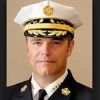Editor’s note: Live-fire tranining can be as dangerous as a working fire. Chief Adam K. Thiel advises us to follow NFPA 1430 to the letter and treat the evolutions like the real thing.
I’m sure we’re all wishing Captain Casillas a speedy and complete recovery from this incident.
Regardless of the specific circumstances, this story demonstrates a simple and obvious truth that we all-too-often forget: training fires are still fires. Or, as one of my first recruit instructors said it, “the fire don’t care” that it’s just for training.
One of my closest “close calls” was a live-burn in an acquired structure. Although we did our best to follow the NFPA 1403 Standard on Live Fire Training Evolutions (required reading for anyone even thinking about such training, in an acquired structure or a specialized burn prop), after several repetitions the fire escaped containment — just like in “real-life” — and rapidly extended from the burn crib throughout the building.
As I dove out the front door, I remember looking over my shoulder and hoping that nobody was left inside. Fortunately, everyone made it out and we let the house burn to the ground while protecting exposures. It was definitely a lucky day for all of us.
Relying on luck for live-burn training — or any other kind, for that matter — probably isn’t the best plan. Many firefighters are injured or, unfortunately, killed each year during training events. I recognize the importance of making training realistic, but we must also do everything possible to keep it safe.
Beyond following NFPA 1403 to the letter during live fire training, treating high-risk training evolutions as much as possible like “the real thing” will go a long way toward protecting our brother and sister firefighters.
After all, “the fire don’t care.”
Stay safe!












